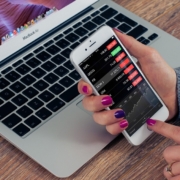Unveiling the Power of Economic Indicators: Insights for Strategic Decision-Makers
Economic indicators play a crucial role in providing valuable insights for strategic decision-makers. They act as barometers, allowing businesses to gauge the overall health of the economy and make informed choices. However, with the vast number of indicators available, it can be challenging to determine which ones truly hold the power to drive decision-making. In this article, we delve into the world of economic indicators, unveiling their true power and highlighting their significance for strategic decision-makers.
The Importance of Economic Indicators
Before we unveil the power of economic indicators, it is important to understand their importance in the first place. Economic indicators are statistical data points that provide valuable information about the performance and trends of various sectors within an economy. These indicators help decision-makers understand the current state of the economy and make informed forecasts regarding future economic conditions.
By analyzing economic indicators, decision-makers gain insights into critical aspects such as inflation rates, employment levels, consumer spending, and GDP growth. This information is invaluable for businesses as it allows them to identify potential risks, assess market conditions, and adapt their strategies accordingly.
Key Economic Indicators to Consider
Not all economic indicators hold equal significance for decision-makers. Some indicators have a greater impact on strategic decision-making than others. Let us explore the key economic indicators that can truly unveil the power:
1. Gross Domestic Product (GDP)
GDP is perhaps the most widely recognized economic indicator. It measures the total value of goods and services produced within a country during a specific period. GDP growth indicates the overall health and trajectory of an economy. Decision-makers can use GDP data to assess the performance of their business relative to the national economy and identify potential areas for growth or contraction.
2. Consumer Price Index (CPI)
The CPI measures changes in the average prices of goods and services purchased by households. It is a key indicator of inflation and reflects the purchasing power of consumers. Decision-makers rely on CPI data to understand the impact of inflation on consumer behavior and adjust pricing strategies accordingly.
3. Unemployment Rate
The unemployment rate provides insights into the labor market. It indicates the percentage of the total workforce that is unemployed and actively seeking employment. Decision-makers monitor changes in the unemployment rate to assess the availability of skilled labor and make informed decisions about hiring or downsizing.
4. Consumer Confidence Index (CCI)
The CCI measures consumer sentiment and reflects the level of optimism or pessimism about the overall state of the economy. Decision-makers pay close attention to CCI data as it helps them understand consumer behavior and predict future demand patterns.
Unleashing the Power of Economic Indicators
Now that we have identified key economic indicators, it is important to understand how to harness their power for strategic decision-making. Simply monitoring these indicators is not enough; decision-makers must interpret them in the context of their specific industry, market, and business goals.
For instance, analyzing GDP growth alone may not provide sufficient insights for a business operating in a niche market. In such cases, decision-makers should complement GDP data with industry-specific indicators to gain a comprehensive understanding of market conditions.
Moreover, the power of economic indicators lies not only in their analysis but also in their ability to serve as a foundation for scenario planning. Decision-makers can use economic indicators to simulate different economic scenarios and evaluate the potential impact on their business. This proactive approach allows them to develop robust strategies that are resilient to changing economic conditions.
Conclusion
Economic indicators are powerful tools that can provide critical insights for strategic decision-makers. By leveraging indicators such as GDP, CPI, unemployment rate, and consumer confidence index, businesses can make informed decisions, mitigate risks, and adapt to changing market conditions. However, it is essential to interpret these indicators in the context of specific industries and markets, while also using them as a foundation for scenario planning. By combining comprehensive analysis and proactive strategies, decision-makers can truly unveil the power of economic indicators and drive their businesses towards success.







